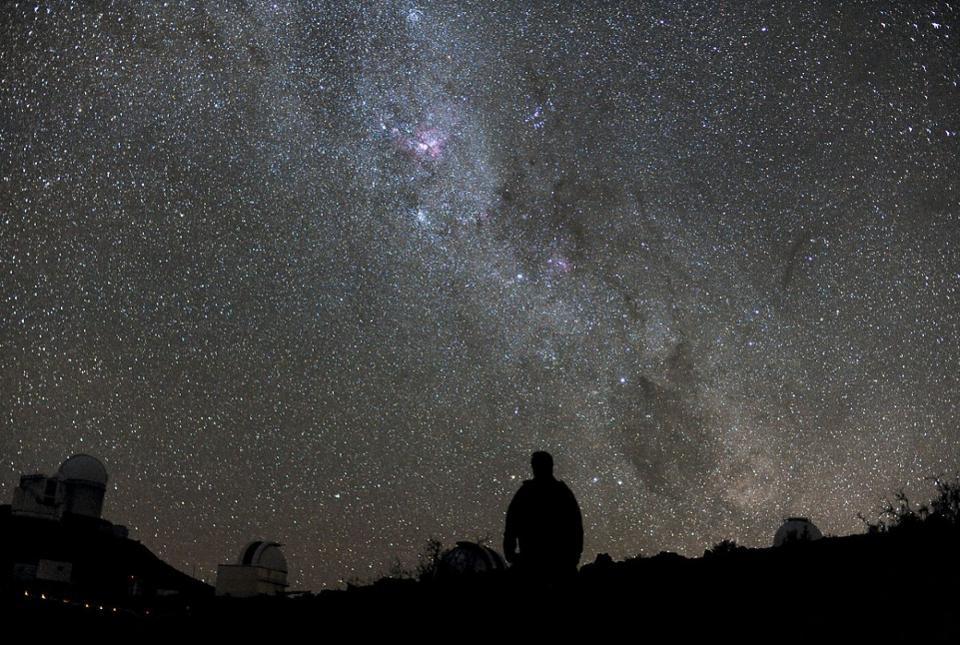Wednesday, October 27
Surprising China
China Freaked Out: The Navy Surfaced 3 Missile Submarines Simultaneously

What history has shown in recent decades is that military posturing has become an integral part of how countries deal with one another.
According to Forrest Morgan, an analyst for the RAND Corporation, such actions all point to what is known as “crisis stability”—the “building and posturing forces in ways that allow a state, if confronted, to avoid war without backing down.”
Showcasing Might in Pacific
One particular example Morgan sheds light on is when the U.S. Navy’s Ohio-class SSGNs surfaced in the Pacific more than a decade ago.
“In July 2010, three SSGNs surfaced nearly simultaneously in Western Pacific and Indian Ocean waters, allegedly to signal U.S. displeasure over Chinese missile tests in the East China Sea,” he writes.
This caught the attention of plenty of local reporters as well.
“The appearance of the USS Michigan in Pusan, South Korea, the USS Ohio in Subic Bay, in The Philippines and the USS Florida in the strategic Indian Ocean outpost of Diego Garcia not only reflects the trend of escalating submarine activity in East Asia, but carries another threat as well,” Greg Torode reported for the South China Morning Post.
“Between them, the three submarines can carry four hundred sixty-two Tomahawks, boosting by an estimated 60 percent-plus the potential Tomahawk strike force of the entire Japanese-based Seventh Fleet—the core projection of U.S. military power in East Asia. One veteran Asian military attaché, who keeps close ties with both Chinese and U.S. forces, noted that four hundred sixty-odd Tomahawks is a huge amount of potential firepower in anybody’s language,” he continued.
The reporter concluded that “it is another sign that the U.S. is determined to not just maintain its military dominance in Asia, but to be seen doing so—that is a message for Beijing and for everybody else, whether you are a U.S. ally or a nation sitting on the fence. READ MORE...

What history has shown in recent decades is that military posturing has become an integral part of how countries deal with one another.
According to Forrest Morgan, an analyst for the RAND Corporation, such actions all point to what is known as “crisis stability”—the “building and posturing forces in ways that allow a state, if confronted, to avoid war without backing down.”
Showcasing Might in Pacific
One particular example Morgan sheds light on is when the U.S. Navy’s Ohio-class SSGNs surfaced in the Pacific more than a decade ago.
“In July 2010, three SSGNs surfaced nearly simultaneously in Western Pacific and Indian Ocean waters, allegedly to signal U.S. displeasure over Chinese missile tests in the East China Sea,” he writes.
This caught the attention of plenty of local reporters as well.
“The appearance of the USS Michigan in Pusan, South Korea, the USS Ohio in Subic Bay, in The Philippines and the USS Florida in the strategic Indian Ocean outpost of Diego Garcia not only reflects the trend of escalating submarine activity in East Asia, but carries another threat as well,” Greg Torode reported for the South China Morning Post.
“Between them, the three submarines can carry four hundred sixty-two Tomahawks, boosting by an estimated 60 percent-plus the potential Tomahawk strike force of the entire Japanese-based Seventh Fleet—the core projection of U.S. military power in East Asia. One veteran Asian military attaché, who keeps close ties with both Chinese and U.S. forces, noted that four hundred sixty-odd Tomahawks is a huge amount of potential firepower in anybody’s language,” he continued.
The reporter concluded that “it is another sign that the U.S. is determined to not just maintain its military dominance in Asia, but to be seen doing so—that is a message for Beijing and for everybody else, whether you are a U.S. ally or a nation sitting on the fence. READ MORE...
Colassal Sunfish
4,400-pound sunfish caught off North Africa literally tips the scales
The massive ocean sunfish weighed more than 4,400 pounds, scientists estimate. (Image credit: Reuters / Seville University)
At least that's how heavy marine biologists estimated the mammoth fish to be, based on its girth and the dimensions of sunfish that had previously been captured and weighed. "We tried to put it on the 1,000-kilogram (2,200 pounds) scale, but it was too heavy," marine biologist Enrique Ostale told Reuters. "It would've broken it."
Fishers in Ceuta, a Spanish territory bordering Morocco, discovered the animal tangled in their nets in early October. They immediately called in Ostale, head of Seville University's Marine Biology Lab in Ceuta, to examine the massive sunfish. After first isolating the creature in an underwater pen attached to the boat, the team briefly hauled the fish into the air, using a crane.
Like other ocean sunfish, all of which belong to the genus Mola, the creature resembled an oblong pancake with huge, googly eyes stuck to its sides. Two massive, winglike fins extended from the top and bottom of the fish; in the ocean, sunfish wave these fins to and fro to propel their hefty bodies through the water.
Once the sunfish had been hoisted on deck, the team measured the animal and determined it to be 10.5 feet (3.2 meters) long and 9.5 feet (2.9 m) wide; for scale, a king-size bed is only 6.6 feet (2.03 m) long by 6.3 feet (1.9 m) wide. After measuring the sunfish and taking photos and DNA samples, the crew released the animal back into the sea, where it soon disappeared into the watery depths. READ MORE...
Beyond our Reach
Even if we traveled at the speed of light, we'd never catch up to these galaxies.
 Distant galaxies, like those found in the Hercules galaxy cluster, are not only redshifted and receding away from us, but their apparent recession speed is accelerating. Many of the most distant galaxies in this image are receding from us at speeds that appear to exceed the speed of light. We will never be able to reach any of the ones presently located more than 18 billion light-years away. (Credit: ESO/INAF-VST/OmegaCAM. Acknowledgement: OmegaCen/Astro-WISE/Kapteyn Institute.)
Distant galaxies, like those found in the Hercules galaxy cluster, are not only redshifted and receding away from us, but their apparent recession speed is accelerating. Many of the most distant galaxies in this image are receding from us at speeds that appear to exceed the speed of light. We will never be able to reach any of the ones presently located more than 18 billion light-years away. (Credit: ESO/INAF-VST/OmegaCAM. Acknowledgement: OmegaCen/Astro-WISE/Kapteyn Institute.)
 The Milky Way, as seen at La Silla observatory, is a stunning, awe-inspiring sight to anyone, and offers a spectacular view of a great many stars in our galaxy. Beyond our galaxy, however, are trillions of others, nearly all of which are expanding away from us. (Credit: ESO / Håkon Dahle)
The Milky Way, as seen at La Silla observatory, is a stunning, awe-inspiring sight to anyone, and offers a spectacular view of a great many stars in our galaxy. Beyond our galaxy, however, are trillions of others, nearly all of which are expanding away from us. (Credit: ESO / Håkon Dahle)
 As long as the light from any galaxy that was emitted at the start of the hot Big Bang 13.8 billion years ago would have reached us by today, that object is within our presently observable universe. However, not every observable object is reachable. (Credit: F. Summers, A. Pagan, L. Hustak, G. Bacon, Z. Levay, and L. Frattere (STScI))
As long as the light from any galaxy that was emitted at the start of the hot Big Bang 13.8 billion years ago would have reached us by today, that object is within our presently observable universe. However, not every observable object is reachable. (Credit: F. Summers, A. Pagan, L. Hustak, G. Bacon, Z. Levay, and L. Frattere (STScI))
 The Hubble eXtreme Deep Field (XDF) may have observed a region of sky just 1/32,000,000th of the total, but was able to uncover a whopping 5,500 galaxies within it: an estimated 10% of the total number of galaxies actually contained in this pencil-beam-style slice. The remaining 90% of galaxies are either too faint or too red or too obscured for Hubble to reveal. (Credit: HUDF09 and HUDF12 teams; Processing: E. Siegel)
The Hubble eXtreme Deep Field (XDF) may have observed a region of sky just 1/32,000,000th of the total, but was able to uncover a whopping 5,500 galaxies within it: an estimated 10% of the total number of galaxies actually contained in this pencil-beam-style slice. The remaining 90% of galaxies are either too faint or too red or too obscured for Hubble to reveal. (Credit: HUDF09 and HUDF12 teams; Processing: E. Siegel)
However, most of them are already permanently unreachable by us.
 Distant galaxies, like those found in the Hercules galaxy cluster, are not only redshifted and receding away from us, but their apparent recession speed is accelerating. Many of the most distant galaxies in this image are receding from us at speeds that appear to exceed the speed of light. We will never be able to reach any of the ones presently located more than 18 billion light-years away. (Credit: ESO/INAF-VST/OmegaCAM. Acknowledgement: OmegaCen/Astro-WISE/Kapteyn Institute.)
Distant galaxies, like those found in the Hercules galaxy cluster, are not only redshifted and receding away from us, but their apparent recession speed is accelerating. Many of the most distant galaxies in this image are receding from us at speeds that appear to exceed the speed of light. We will never be able to reach any of the ones presently located more than 18 billion light-years away. (Credit: ESO/INAF-VST/OmegaCAM. Acknowledgement: OmegaCen/Astro-WISE/Kapteyn Institute.)KEY TAKEAWAYS
- The universe is expanding, with every galaxy beyond the Local Group speeding away from us.
- Today, most of the universe's galaxies are already receding faster than the speed of light.
- All galaxies currently beyond 18 billion light-years are forever unreachable by us, no matter how much time passes.
- Our universe, everywhere and in all directions, is filled with stars and galaxies.
 The Milky Way, as seen at La Silla observatory, is a stunning, awe-inspiring sight to anyone, and offers a spectacular view of a great many stars in our galaxy. Beyond our galaxy, however, are trillions of others, nearly all of which are expanding away from us. (Credit: ESO / Håkon Dahle)
The Milky Way, as seen at La Silla observatory, is a stunning, awe-inspiring sight to anyone, and offers a spectacular view of a great many stars in our galaxy. Beyond our galaxy, however, are trillions of others, nearly all of which are expanding away from us. (Credit: ESO / Håkon Dahle)- From our vantage point, we observe up to 46.1 billion light-years away.
 As long as the light from any galaxy that was emitted at the start of the hot Big Bang 13.8 billion years ago would have reached us by today, that object is within our presently observable universe. However, not every observable object is reachable. (Credit: F. Summers, A. Pagan, L. Hustak, G. Bacon, Z. Levay, and L. Frattere (STScI))
As long as the light from any galaxy that was emitted at the start of the hot Big Bang 13.8 billion years ago would have reached us by today, that object is within our presently observable universe. However, not every observable object is reachable. (Credit: F. Summers, A. Pagan, L. Hustak, G. Bacon, Z. Levay, and L. Frattere (STScI))- Our visible universe contains an estimated ~2 trillion galaxies.
 The Hubble eXtreme Deep Field (XDF) may have observed a region of sky just 1/32,000,000th of the total, but was able to uncover a whopping 5,500 galaxies within it: an estimated 10% of the total number of galaxies actually contained in this pencil-beam-style slice. The remaining 90% of galaxies are either too faint or too red or too obscured for Hubble to reveal. (Credit: HUDF09 and HUDF12 teams; Processing: E. Siegel)
The Hubble eXtreme Deep Field (XDF) may have observed a region of sky just 1/32,000,000th of the total, but was able to uncover a whopping 5,500 galaxies within it: an estimated 10% of the total number of galaxies actually contained in this pencil-beam-style slice. The remaining 90% of galaxies are either too faint or too red or too obscured for Hubble to reveal. (Credit: HUDF09 and HUDF12 teams; Processing: E. Siegel)However, most of them are already permanently unreachable by us.
TO READ MORE, CLICK HERE...
Tuesday, October 26
Solar Cooking

A solar cooker being used to prepare food in Madhya Pradesh, India.
This story was identified by Call to Earth guest editor Rodrigo Pacheco. He is a chef who grows sustainable food at his restaurant and creative permaculture project in Ecuador, and he is a former UN Food and Agricultural Organization (FAO) Goodwill Ambassador.
(CNN)From cool, dewy European mountain ranges and humid Central Asian forests to the urban sprawl across North America and the arid landscapes of the African continent, millions of people are cooking with only the sun's rays as fuel.
This culinary magic is known as solar cooking. Instead of burning a fuel source, solar cooking uses mirrored surfaces to channel and concentrate sunlight into a small space, cooking food while producing zero carbon emissions.
According to the World Health Organization (WHO), 2.6 billion people around the globe cook their daily meals over open fires. Fuelled with wood, animal waste, kerosene and charcoal, these fires produce highly polluting smoke and contribute to deforestation, soil erosion and ultimately desertification -- but solar cookers could provide an alternative.
Solar cookers and shrinking forests
Solar Cookers International (SCI) is an non-profit that advocates for the adoption of solar thermal cooking technologies. SCI says it knows of over 4 million solar cookers around the world, which people are using to cook and bake in the direct sun or through light clouds.
One of these people is Janak Palta McGilligan. The 73-year-old is a member of the SCI Global Advisory Council and director of the Jimmy McGilligan Centre for Sustainable Development in Madhya Pradesh, India -- which she founded with her late husband in 2010. TO READ MORE, CLICK HERE...
Enter your email to sign up for the Wonder Theory newsletter.
close dialog
Ridiges of South Seitah
Ask any space explorer, and they’ll have a favorite photograph or two from their mission.
For Jorge Núñez, an astrobiologist and planetary scientist working on the science team of NASA’s Perseverance rover, one of his current favorites is a rover’s-eye panorama of the “South Séítah” region of Mars’ Jezero Crater.
Exploring the geologic unit was among the major objectives of the team’s first science campaign because it may contain some of the deepest, and potentially oldest, rocks in the giant crater.
“Just like any excited tourist approaching the end of a major road trip, we stopped at a lookout to get a first view of our destination,” said Núñez, who is based at Johns Hopkins University Applied Physics Laboratory in Laurel, Maryland.
“Just like any excited tourist approaching the end of a major road trip, we stopped at a lookout to get a first view of our destination,” said Núñez, who is based at Johns Hopkins University Applied Physics Laboratory in Laurel, Maryland.
“This panorama is spectacular because you feel like you are there. It shows not only the incredible scale of the area, but also all the exploration possibilities South Séítah has to offer. With multiple intriguing rocky outcrops and ridgelines, each one is seemingly better than the last. If it’s not a field geologist’s dream, it’s pretty close.”
Composed of 84 individual enhanced-color images that were later stitched together, the mosaic was taken on September 12 (the 201st Martian day, or sol, of the mission) by the Mastcam-Z camera system as the rover was parked on an elevated overlook just outside its entry point into South Séítah.
Composed of 84 individual enhanced-color images that were later stitched together, the mosaic was taken on September 12 (the 201st Martian day, or sol, of the mission) by the Mastcam-Z camera system as the rover was parked on an elevated overlook just outside its entry point into South Séítah.
Perseverance had just completed a record 190-yard (175-meter) drive the previous sol. READ MORE...
Italian Flight Attendants
Italian flight attendants stripped down to their underwear to protest job losses and pay cuts.
Around 50 former female Alitalia flight attendants stripped down to their underwear at the Campidoglio in Rome, CNN reported.
The flight attendants decided to remove their clothing after showing up in their Alitalia uniforms, chanting "We are Alitalia” while undressing.
The news comes after Alitalia ceased its operations, and ITA Airways took its place as the national carrier in Italy. However, not everyone from Alitalia was able get a job with the new airline.
Only 2,600 of the 10,500 Alitalia employees have received a job from ITA Airways.
One new ITA Airways attendant told CNN that those who did get a job with the new airline have seen their seniority drop, received a pay cut and are not told far enough in advance when they will work.
ITA President Alfredo Altavilla said all the employees agreed on the terms of their contracts and the threats of a strike are "a thing of national shame."
ITA Airways will retain half of Alitalia’s planes but will also add new airbuses to the national carrier, according to Reuters.
It will still be a few months until ITA Airways is fully phased in while Alitalia ends its operations. Passengers have not been affected by the change in airlines.
Monday, October 25
Heart Cath
What happens during a heart catheterization procedure?
In cardiac catheterization (often called cardiac cath), your doctor puts a very small, flexible, hollow tube (called a catheter) into a blood vessel in the groin, arm, or neck. Then he or she threads it through the blood vessel into the aorta and into the heart. Once the catheter is in place, several tests may be done.
AUTHOR's COMMENTS:
On Tursday of this week, I will be having this procedure at UT Medical Center - Heart and Lung Department... This is the second time that a procedure like this has been performed on me... the first time was at the same hospital and was performed in 2008 and the surgeon recommended a triple bypass, but instead I had 5 stents inserted into my heart arteries over a 12 month period of time with 3 surgeries.
It appears that my stents may no longer be working as they should since a recent stress test indicated an abnormal reading that pointed to my LAD... So, this procedure is to take a closer look at the problem...
My surgery is scheduled at 7:00 am so I have to arrive at 5:30 am which means I have to leave the house at 4:30 am and that means I must get up and shower at 4:00 am... this should not be a problem for me as I am always waking up during the night at various times to urinate.
Hopefully, I will be released and on my way home by noon or earlier of that same day...
Magnetic Ropes Surround Us

The proposed giant tunnel is hundred of light years wide, making it big enough to encompass Earth, our solar system, and even nearby stars. (Image credit: Eduard Muzhevskyi via Getty Images)
Our planet, along with the rest of the solar system and some nearby stars, may be trapped inside a giant magnetic tunnel — and astronomers don't know why.
A tube of vast magnetized tendrils, 1,000 light-years long and invisible to the naked eye, may encircle the solar system, astronomers propose in a new paper.
Our planet, along with the rest of the solar system and some nearby stars, may be trapped inside a giant magnetic tunnel — and astronomers don't know why.
A tube of vast magnetized tendrils, 1,000 light-years long and invisible to the naked eye, may encircle the solar system, astronomers propose in a new paper.
Jennifer West, an astronomer at the Dunlap Institute for Astronomy and Astrophysics at the University of Toronto, made the proposal after an investigation into the North Polar Spur and the Fan Region — two of the brightest radio-emitting gas structures in our galactic neighborhood — revealed that the two structures might be linked even though they are located on different sides of the sky.
"If we were to look up in the sky, we would see this tunnel-like structure in just about every direction we looked — that is, if we had eyes that could see radio light," West said in a statement.
The curving tendrils — which are made of both charged particles and a magnetic field, and resemble long, thin ropes — project outward from the North Polar Spur and the Fan Region.
"If we were to look up in the sky, we would see this tunnel-like structure in just about every direction we looked — that is, if we had eyes that could see radio light," West said in a statement.
The curving tendrils — which are made of both charged particles and a magnetic field, and resemble long, thin ropes — project outward from the North Polar Spur and the Fan Region.
Not only could the strange cosmic ropes link the two regions, but they could form something akin to "a curving tunnel" where the tendrils are like "the lines formed by the tunnel lights and road lane marker," the researchers said. TO READ MORE, CLICK HERE...
Subscribe to:
Posts (Atom)






















